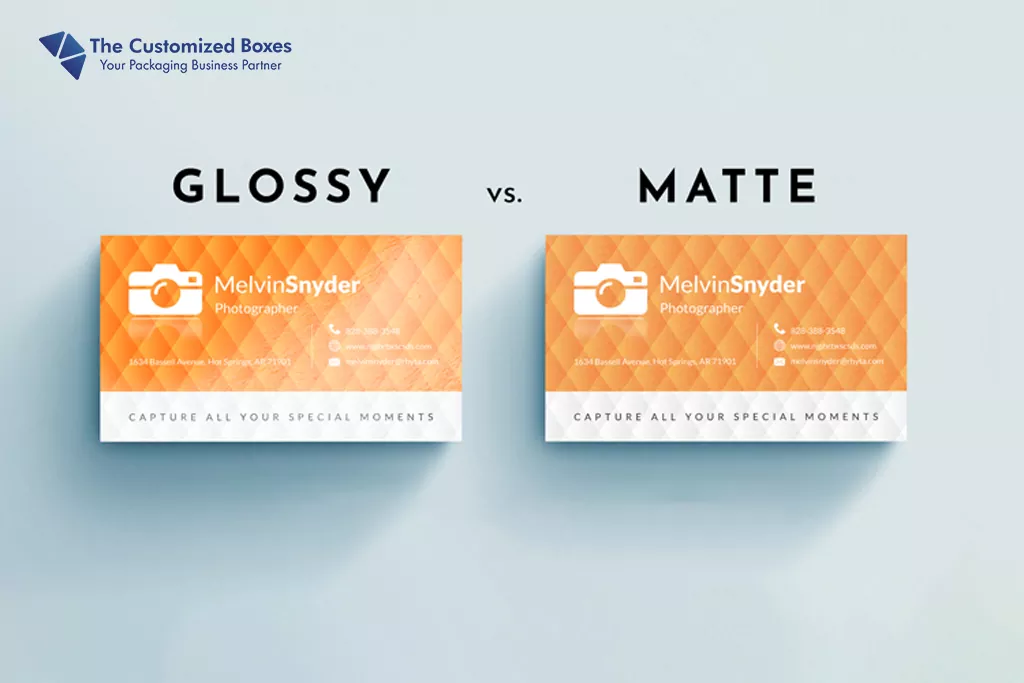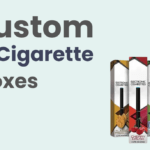Laminations are rarely covered in considerable depth. It can occasionally result in dangerous judgments that are only sometimes in the best interests of your simple kraft boxes and products.
The coating process effectively prepares the goods for customer service. For the intended packaging design, the laminate must be paired with the artwork and colors.
Whether used on the surface of a paper bag, book cover, label, or product packaging, matte vs gloss lamination always draws attention to the visual appeal and physical quality of the object. Even better, it protects your design from unseen bumps and scrapes.
The packaging sector has seen several transformations throughout the years. There are several matte vs gloss lamination options, each with advantages and disadvantages. Both coatings are two forms of packaging that have grown in popularity in recent years.
One of the most often requested packaging design concerns is whether matte vs gloss lamination is preferable. Regarding your brand, you may need help knowing where to begin regarding which surface treatment may enhance the packaging and goods.
However, there is no straightforward answer to determining the ideal packaging option for your business; it all relies on the occasion, purpose, and design of the package components. In this study, we will investigate and discuss the distinctions between matte vs gloss lamination and which choice would work best for your brand and packaging requirements.
What Is Lamination?
Lamination is a printing method that bonds a translucent plastic layer to a printed product to make it more robust and durable. It is often put on both sides of an item to produce a protective barrier.
It protects it from smudges, scuffs, and other things that may subtract from its appearance, such as tears, stains, and humidity, which may ultimately damage the object.
Lamination, which is typically used on items that receive a lot of touches, helps the colors in your product package design “pop” and stand out more.
In most situations, bonding is applied to both sides of the printed object, completely enclosing it in plastic film. It shields the item against stains, rips, wetness, and other threats that might harm or ruin it entirely. It strengthens and rigidifies a printed object while also enhancing color contrast.
Lamination is utilized in various print applications and is excellent for goods that are handled often. As an example:
- Printing restaurant menus
- Lists of prices
- Maps
- Bookmarks for books
- Membership and business cards
- Promotional items
- Catalog printed on paper
Lamination also protects printed objects that are exposed to dirt or moisture. Machine warnings, operating instructions, safety notices, reusable tags, and other items are included.
In these situations, the plastic film frequently extends beyond the printed piece’s edge so that both layers may bind. It creates a tight barrier that removes dirt, moisture, and other impurities.
It can be done by heat or adhesion in the printing industry. Most printing businesses prefer heat because it creates a stronger, more permanent bond. A multilayer film’s thickness is often expressed in “mils,” which is not the same as millimeters.
One mil is 1,000th of an inch (.001″). The environment determines the thickness required for a printed object it will handle and the necessary stiffness.
What Is Matte Lamination?
The simplest way to tell if a surface is a matte laminated is by how light reflects off it. It seems flat and buried because it reflects little to no light.
Matte lamination is an excellent choice for interactive packaging since it is susceptible to the touch.
For example, when checking matte coating on a sample or prototype, it’s critical to pay attention to how the colors appear. When matte laminated, colors may seem faded and with a lesser depth. It frequently appears in premium packaging to convey a sleek and contemporary appearance.
Matte lamination is a form of overlay that provides the printed material with a matte appearance. These panels are frequently used in packaging, graphic design, and other specialized fields where an uneven surface is required.
Since dull film enables light to travel through it more quickly than glossy film, it provides higher wear and tear resistance than gloss or semi-gloss films.
What Really Is Gloss Lamination?
The most popular form of coating is gloss laminate film. It is a thin film that has been heated before being applied to your package after being coated with a resin coating.
A gloss finish gives your goods a striking appearance and provides an additional layer of defense against humidity or chemical damage.
Despite matte vs gloss, lamination has a glossy look because light bounces off the surface. Consequently, the depth of color is more intense, and visual contrast and brightness are increased.
Glossy layered bags and magazines may look shiny compared to their muted matte equivalents because they draw attention to themselves.
As a result, they may be suitable for brochures, book covers, perfume bottles, and bookcases. A gloss overlay may improve a product differently than a matte finish; if your company wishes to create a warmer and more youthful atmosphere, use gloss lamination.
Since gloss lamination enhances and illuminates your colors, they will look more distinct and detailed.
When Should You Apply Matte Lamination Vs Gloss Lamination?
When using matte lamination,
- Your items will be in direct sunlight. It decreases glare while also making the package visible from a distance.
- The retail bundle will be dealt with less often. Although laminate may withstand some handling, matte finish, in particular, can be harmed by accidental scratches or scuffs.
- Users want their products to seem professional and appealing.
- You are using subdued or muted hues.
When applying gloss lamination, you ought to:
- There is substantial handling of the package. Gloss is more resistant to scratches and smudges and is simple to clean. If fingerprint resistance is a must, consider your varnish options throughout the packaging process. Additionally, several aqueous coatings are used to prevent fingerprints.
- The glare does not bother anyone as long as the colors are visible.
- You would want to cut costs. Gloss is frequently less expensive than matte (unless your custom packaging supplier offers both matte vs gloss lamination for free).
Benefits And Limitations of Matte Vs Gloss Lamination
Matte Lamination
Protection: The film lamination hides scuffs and scratches better.
Appearance: Rich, soft, covert, and seen as having superior quality
Adaptable to Ink: Labels and menu cards with matte laminating that are ink-receptive enable erasable writing.
Glare: It is avoided because of the matte finish.
Gloss Lamination
Protection: avoids dust, sand, and fingerprints
Appearance: Shiny, vibrant, impactful, and thought to be of higher quality. Dirt and smudges are usually removed from a gloss laminate surface with ease. Imperfections, dents, and faults stand out more on glossy surfaces.
Adaptable to Ink: Writing on a slick surface is tough.
Glare: The varnish on research posters might be an issue. In contrast, if poster sessions are lit by lights set well above the signs, glare is directed toward the floor and doesn’t hinder readability.
What Alternative Is Ideal For Your Packaging?
When choosing the right coating, users must address the question, “What will the lamination be used for?”
Each has advantages and downsides, as was already stated, but some benefits may be minor or of no concern depending on how users intend to apply them. You should consider the “best of both worlds” option.
By placing a matte overlay more than a glossy label, users may be able to read barcodes more easily and manually rewrite them if necessary.
Some people find matte lamination to be monotonous. However, applying gloss coating over a flat label may give your container a rich finish and a more detailed look.
You will have to make a number of significant choices during the custom packaging process; it entails much more than just “printing a package.”
But it would help if you still accomplished something by yourself—Matte vs gloss lamination relating to packaging kinds, commodities, print needs, and more.
Conclusion
Whether your product is displayed on a grocery store shelf, in a customer’s mailbox, or on their phone screen via an Instagram story, the packaging is frequently the first thing customers will notice about it. While it may not be immediately apparent, the type of finish you choose may convey as much information about your brand as your color scheme, graphics, or logo.
Clients will initially notice your product’s rigid cardboard box packaging when they come into touch with it. Users want them to feel that their time and work were worthwhile, but you don’t need loud colors or bright typography because they might irritate people if not used appropriately.
Depending on the sort of customer aiming to reach, glossy lamination delivers an eye-catching finish, while matte offers subtle elegance that appeals more quietly.
Matte vs gloss lamination procedures have advantages of their own and play a crucial role in making a lasting impression. It outlines the packaging of your product will stand out in the marketplace.







